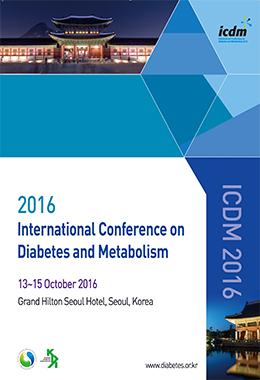Objective: The association between resting heart rate and developing diabetes is not fully revealed. Furthermore, the relationship between change in resting heart rate and incidence of diabetes has not been studied. We aimed to investigate the association between change in resting heart rate over 2 years and the risk of developing diabetes.
Methods: We studied 7,416 adults without diabetes who participated in Korean Genome and Epidemiology Study, a community-based, 10-year prospective study in which resting heart rate was measured at baseline and after 2 years. Incident diabetes was defined as: fasting blood glucose ≥ 126 mg/dL; 2-hour post-load glucose ≥ 200 mg/dL by 75g oral glucose tolerance test; or current use of diabetes medications. Relative risk for developing diabetes associated with 2-year change in resting heart rate was calculated using Cox models.
Results: During 10 years of follow-up, 1,444 (19.5%) developed diabetes. Compared to increased resting heart rate ≤ 5 beats per minute (bpm) over 2 years, an increase > 10 bpm was significantly associated with developing diabetes (adjusted hazard ratio:1.31, 95% confidence interval: 1.06,1.60), even after adjusting for glycometabolic parameters and baseline resting heart rate. This significant association was attenuated among subjects who regularly exercised (P = 0.650), but remained significant among subjects who did not regularly exercise (P = 0.010).
Conclusion: An increase in resting heart rate in a 2-year follow-up period is significantly associated with a risk of developing diabetes, independent of baseline resting heart rate and glycometabolic parameters. Further investigation to control resting heart rate as a potential preventive way for developing diabetes is needed.




